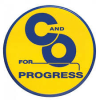High Nose
First unread post • 7 posts
• Page 1 of 1
 High Nose
High Nose
Just a general question. Why do some locos like the GP9 have two versions - one with a high nose and one with a low nose. What was in the high nose that was so necessary that it justified obstructing the view of the driver?
"Manny - I need shoes!"
-

HankySpanky - Posts: 322
- Joined: Mon Jul 15, 2013 2:50 pm
- Location: Ft. Lauderdale
Re: High Nose
Those early Diesel locomotives were often ordered for passenger service. Passenger cars need steam for heating or aircondtioning. The high short hood housed a vertical water tube boiler to supply that steam. Steam is created from water, so besides a fuel tank, those passenger/dual service Diesels also had a water tank under the frame besides the fuel tank.
To enable the locomotive to carry as much water and fuel as possible, the air tanks that were mounted under the frame in an indent of the fuel tank were sometimes moved to the roof of the locomotive, giving them the nickname 'Torpedo boats.
Very early in dieseldom, the high long hood end with the prime mover was considered the front, and the high short hood with the steam generator the rear.
To enable the locomotive to carry as much water and fuel as possible, the air tanks that were mounted under the frame in an indent of the fuel tank were sometimes moved to the roof of the locomotive, giving them the nickname 'Torpedo boats.
Very early in dieseldom, the high long hood end with the prime mover was considered the front, and the high short hood with the steam generator the rear.
Edwin "Kanawha"

The Chessie, the train that never was ... (6000 hp Baldwin-Westinghouse steam turbine electric)
The Chessie, the train that never was ... (6000 hp Baldwin-Westinghouse steam turbine electric)
-

_o_OOOO_oo-Kanawha - Posts: 3231
- Joined: Mon Nov 14, 2011 2:12 pm
Re: High Nose
HankySpanky wrote:- - And don't say "A bathroom with a shower".
Even though you say that in jest, on most locomotives the short hood end of the locomotive does contain a toilet for the crew. Some even contain a drop down sink. The high hoods are walk in, meaning the floor for the toilet area is on the same level as the cab floor. Many of the low hoods either have steps down to the nose toilet area, or a door and / or access hatch you have to crawl through to reach the toilet area. Other equipment often is located in the short hood end of the locomotive, like the ditch light equipment, sander magnet valves and on some locomotives cab signal equipment. The last two hold outs for long hood lead were the Southern Railway and the Norfolk & Western Railway and the curious part, even when they started purchasing low short hood units, the long hood was still designated the front.
Rich S.
You do not have the required permissions to view the files attached to this post.
Cheers,
Rich S.
Rich S.
-

Rich_S - Posts: 708
- Joined: Tue Aug 24, 2010 11:19 pm
- Location: Baden, PA, USA
Re: High Nose
Actually, some of the later units - Southern's GP38-2's and GP40X's being one example - had dual controls that would allow the operator to easily run a unit from either direction. As the units were absorbed into larger companies, the conductor-side stand in most cases were removed. And, as NS is presently doing with it's remaining 40-2 series, the high hoods are being chopped. One spotting feature for the former high-noses is that the top of the hood is more angular than it would be if it had came from the factory with a low nose.
- PolyesterMafia
Re: High Nose
PolyesterMafia wrote:Actually, some of the later units - Southern's GP38-2's and GP40X's being one example - had dual controls that would allow the operator to easily run a unit from either direction. As the units were absorbed into larger companies, the conductor-side stand in most cases were removed. And, as NS is presently doing with it's remaining 40-2 series, the high hoods are being chopped. One spotting feature for the former high-noses is that the top of the hood is more angular than it would be if it had came from the factory with a low nose.
The majority of dual equipped units were sold or scraped. The remaining units did have the short hood lowered and the control stands moved to the right hand side of the cab. I believe most of the GP50 fleet has now been converted into low short hood units, with the horsepower de-rated to 2,000 HP and the engines reclassified as GP38-3. It is also my understanding the High short hood SD40-2's are being rebuilt with the new Admiral cabs to provide more room for the installation of PTC / Leader equipment. One last note, the majority of the Long hood lead SD60's are being rebuilt with the NS designed wide cabs and these units are also being equipped with the PTC / Leader equipment. The only units so far that are remaining untouched are the High short hood GP38-2's that have been equipped with Radio Control equipment. It's makes sense for these units to keep their High Short Hood as it provides more room for the Radio Control equipment.
Rich S.
Cheers,
Rich S.
Rich S.
-

Rich_S - Posts: 708
- Joined: Tue Aug 24, 2010 11:19 pm
- Location: Baden, PA, USA
7 posts
• Page 1 of 1
Who is online
Users browsing this forum: Chacal and 2 guests

